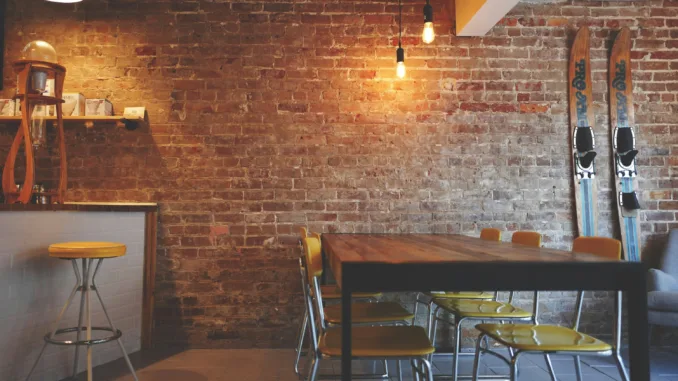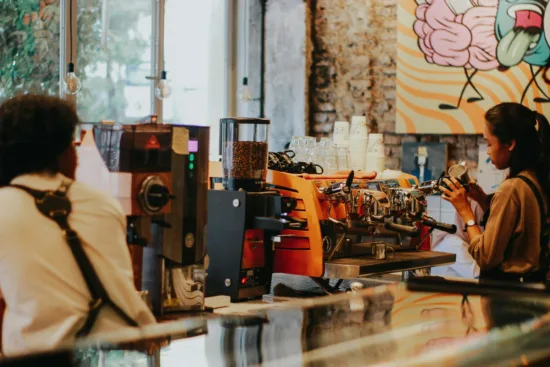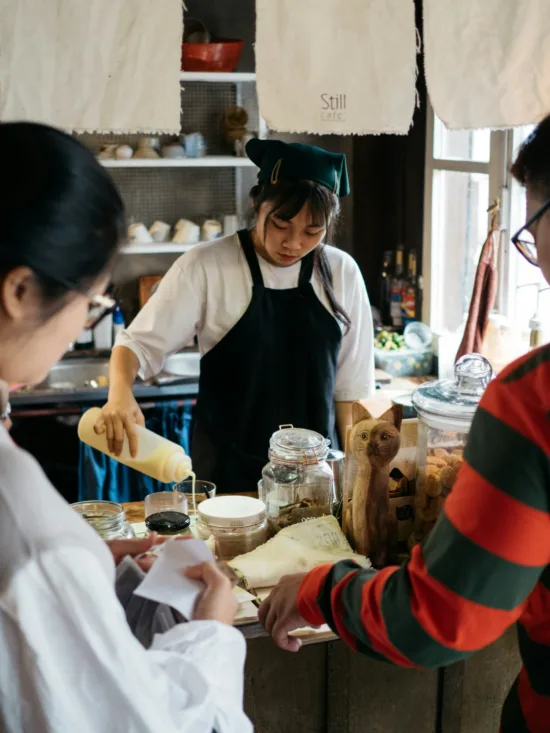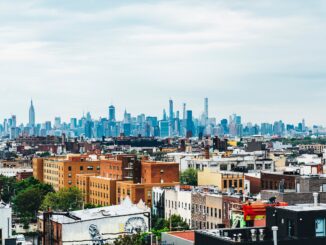
We continue our discussion on “underconsumption core” (Gen Z’s response to economic downturns), and how the movement has been impacting small coffee shops.
BY EMILY JOY MENESES
BARISTA MAGAZINE ONLINE
Featured photo by Drew Coffman
In part one of this article series, we discussed the varying factors—including greater debt, stagnant wages, and rising costs of living—contributing to younger generations embracing more frugal, minimalist lifestyles. We also spoke to several Barista Magazine Online readers and coffee shop owners to hear their thoughts on the matter and how they’ve been impacted.
Today, we’ll continue our discussion by sharing how coffee shop owners can embrace the movement and adapt to people’s growing desire to consume more mindfully.

Quality Over Quantity & Embracing Community
With more people reducing consumption in multiple aspects of their lives, coffee shop owners looking to maintain clientele are being challenged to provide an experience that seems “worth it” to customers. Many coffee shop owners are suggesting that the answer lies in focusing on quality over quantity, and embracing what makes your shop unique.
“(The movement for underconsumption) means quality must meet or exceed pricing expectations. Everything—service, experience, taste, look, etc.—has to be amazing for it to be worth it for me to go to a coffee shop nowadays,” shares Barista Magazine Online reader Abbey Montgomery. “I’ve wasted too much precious ‘fun’ money on (bad) lattes. I stick to the places I know will be great every time.”
“I see how this (underconsumption movement) may impact the larger chains, but smaller independent shops can retain and increase their customer (base) by bringing back café culture with a well-balanced menu that focuses on quality,” adds the team at San Francisco-based Cafe Suspiro. “Too many shops have adopted a clinical/lab approach to their cafés. ‘Sterile’ should never come to mind when having a great cup of coffee. Community, culture, and quality will keep your shop on (people’s) radars.”

The Importance of the “Third Place”
Piggybacking off of Cafe Suspiro’s sentiments, it’s important to remember that cafés don’t just offer people their daily dose of caffeine. They also serve as vital third places, where people can connect with friends and find a sense of belonging outside of home and work.
“We’ve (recently) seen an increase in dine-in coffee, (with) people valuing connection and community,” shares the team at Told You So, a coffee shop based in Queensland, Australia. “We’ve had a slight drop in takeaway (orders), but people seem to (still) be spending their money with small businesses. This is lovely to see.”
Empowering At-Home Baristas
While enhancing customers’ in-shop experience can be helpful in attracting and retaining customers, it could also serve café owners well to place an emphasis on helping people brew great coffee at-home. This could mean pushing merch like brewing gear and bags of coffee, or providing customers with information on how to brew café-quality drinks at home using your beans.

“We could (potentially) transition to coffee roasters opening third spaces and public education centers—so you (could) sell the beans and then educate the consumers on how to best replicate the flavors that you get when they order from your café,” shares Barista Magazine contributor and longtime specialty coffee industry professional Aireus R. “(Then), the cafés act as a ‘this is how good our coffee can taste’ experience.”
Adapting to Underconsumption
The rise of the “underconsumption core” movement amongst younger generations is a clear sign that our economy is hurting. Still, consumers and small business owners alike are finding new ways to adapt to the conditions and support one another along the way.
As people consume more mindfully, we hold hope that small businesses won’t have to suffer as a result, and that we can all redirect our resources to support our neighbors and the family-owned shops that bring so much value into our lives.
ABOUT THE AUTHOR
Emily Joy Meneses (she/they) is a writer and musician based in Los Angeles. Her hobbies include foraging, cortados, vintage synths, and connecting with her Filipino roots through music, art, food, and beverage.
Subscribe and More!
As always, you can read Barista Magazine in paper or digital format. Read the October + November 2024 issue for free with our digital edition.
And for more than three years’ worth of issues, visit our digital edition archives here.





